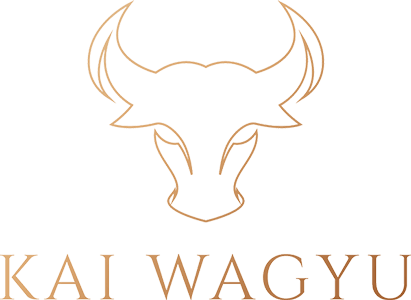Japanese Wagyu Regulation and Sustainability

Wagyu beef is a popular delicacy among food enthusiasts worldwide. Originating in Japan, the term “wagyu” refers to four Japanese breeds of cattle known for their high-quality meat with a distinct marbling pattern. Wagyu farming practices in Japan are raising concerns about sustainability as we are moving into a climate friendly culture. In this blog, we will discuss how sustainable and regulated wagyu and Japanese farming practices are.
Sustainability of Wagyu Farming Practices
Some people criticized Japanese Wagyu agricultural practices for its high environmental impact. However, there are measures in place to ensure sustainable wagyu farming. For example, the Japanese government has implemented the Livestock Industry Act, which regulates the management of livestock farms to minimize environmental impact. Under this act, wagyu farmers are required to keep detailed records of their cattle’s health, feed, and other relevant information
In addition to government regulations, many wagyu farmers in Japan practice sustainable farming methods. Some farmers use a technique called “Kasumigaseki-style farming,” which means the cattle will be raised in natural environments without the use of artificial lighting or feed additives. This approach not only produces high-quality beef but also reduces the carbon footprint of the farming process.
Regulation of Wagyu Farming Practices
Wagyu farms in Japan have strict guidelines on breeding, feeding, and processing. The government set agricultural standards for all Japanese wagyu beef. These standards include, the cattle’s breed, age, and meat quality. Additionally, the Japanese Agricultural Standard (JAS) outlines the criteria for labeling and certifying wagyu beef, ensuring that consumers receive the highest quality product.
The Japanese government also regulates the use of hormones and antibiotics in wagyu farming. Wagyu farming does not use hormones, as they can affect the meat’s flavor and quality. Sometimes, farmers use antibiotics but only to treat sick animals. When farmers use antibiotics, they still must follow strict guidelines to ensure that the meat is safe for consumption.
Japanese Farming Practices
Japanese farming practices, in general, are known for their attention to detail and quality. Farmers in Japan practice traditional farming techniques that have been passed down through generations. For example, many farmers use natural fertilizers such as compost and manure to enrich the soil, resulting in healthier crops and less environmental impact.
Japanese farmers also prioritize animal welfare. For example, many farmers use rotational grazing, where cattle are moved to different pastures to ensure that they have access to fresh grass and reduce the environmental impact of overgrazing. Additionally, farmers often use traditional housing methods for their animals, such as straw-lined barns, to keep them comfortable and healthy.
Conclusion
In conclusion, sustainable and regulated wagyu and Japanese farming practices are important for ensuring the quality of wagyu beef and protecting the environment. While there are concerns about the environmental impact of wagyu farming, the Japanese government has implemented measures to regulate and minimize this impact. Additionally, many wagyu farmers practice sustainable farming methods, such as Kasumigaseki-style farming, to reduce their carbon footprint.
Regulation is also an essential aspect of wagyu farming in Japan, with strict guidelines on breeding, feeding, and processing. The Japanese Agricultural Standard ensures that wagyu beef meets the highest standards of quality and safety.
Japanese farming practices, in general, prioritize animal welfare and sustainable farming methods, such as natural fertilizers and rotational grazing. By prioritizing these practices, Japanese farmers are not only producing high-quality wagyu beef while also protecting the environment and ensuring the sustainability of their farming practices.
